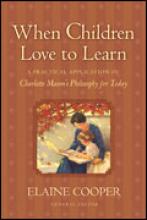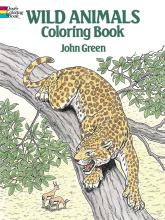No name
What's The Deal?
National Geographic published some longer, generously illustrated non-fiction picture books, and this is one of them. A great aid to any homeschool's History curriculum. We have picked up several different titles from the library like this one. I, for one, learned a lot! From their site:
This entertaining saga brings a legendary land deal to life. Over 60 reproductions of art from the period, a cast of characters, maps, a timeline, endnotes, a bibliography, and index give young readers all the resources they need to understand the period in which the Purchase took place.
When Children Love to Learn
When Hitler Stole Pink Rabbit
Where Valor Lies
Whigs and Tories
This is an extensive reading list, from a Catholic perspective, on materials relating to or taking place at the same time as the American Revolution. The extensive introduction gives tips and ideas for studying the revolution, choosing books, and how to proceed. The list is broken up into the following categories: Grades K-3 Series, Grades K-3 Individual Titles, Grades 3-6 Series, Grades 3-6, Individual Titles, Grades 5-Up Series, Grades 5-Up Individual Titles, Grades 7-Up Series, Grades 7-Up Individual Titles and Grades 10-Up Individual Titles. Many of the titles include short descriptions and hundreds of books are covered. This resource also includes a Timeline of the American Revolution, books about contemporary figures (such as Blessed Junipero Serra), a list of "Prominent Catholics in the American Revolution" – an essay about Catholicism during the American Revolution, and a listing of good Catholic textbooks and Reference books that cover the American Revolution. The Appendix lists companies that sell those books (currently in print) that are recommended in this resource.
Who Carved the Mountain?
Our family was delighted to visit Mount Rushmore recently, along with several other Love2Learn families. Since we live in South Dakota, Mount Rushmore books have prominent and permanent displays in our library system's many branches. Who Carved the Mountain saw the inside of our weekly library bag many times and became our favorite Mount Rushmore picture book. When I saw the warm, familiar cover at the Mount Rushmore gift shop's window, I could not resist it: I went inside resolutely and by the time I came out, our family was the proud owner of a copy of this beautifully illustrated volume!
Who Carved the Mountain features the many people associated with Mount Rushmore in attractive, friendly and educational double-spread pages. There are twelve of these, depicting Doane Robinson who first thought of the project, artist Borglum, the four presidents, the project's workers and more. Pictured in warm colors and rich in detail, they are also described in verse and on an interesting-tidbits-full sidebar. The text on each page is just enough, providing both brief enough descriptions and meaty enough content. The verses are told in a first person perspective:
The Pointer
I am the pointer
I make the marks on the mountainFirst, I work in Borglum’s studio
I measured the models of our presidents
And I multiplied each number by twelve.I loved the math, the complicated math.
The mouths would be eighteen feet wide!Next I climbed Mount Rushmore.
With a pointing machine and a paintbrush
I marked measurements on the rock.The workers knew exactly where to drill
Because I made the marks on the mountain.Who drilled the holes in the mountain?
Each set of verses lead up to next person to be described: the stone carver, the "power man", the presidents, Borglum and his son--they are all there. The sidebars offer a biographical sketch and curious and interesting facts about each one. Illustrator Renee Graef, known to Catholic homeschoolers as the Laura Ingalls' picture books illustrator who captured so well the original Garth Williams pictures, and from Melissa Wiley's books' covers, did a fabulous job bringing the feeling of the Black Hills to her illustrations, as well as the historical and complex technical details of the carving. Her portraits of the four presidents sitting by their desks are also warm, rich and just lovely to enjoy.
Who's My Baby? Memory Matching
Why Be Catholic?
Wild Animals Coloring Book
A very nice, detailed and academic-oriented coloring book for learning about wild animals. In addition to beautiful line drawings of 47 different animals from around the world, the text provides common and scientific names and details about appearance, location, habits, size, etc. The index includes both common and scientific names as well, for easy look-up. Illustrations are royalty free (within certain conditions) and may be copied for use within your family.
Dover offers a couple of examples of how the finished images might look:









